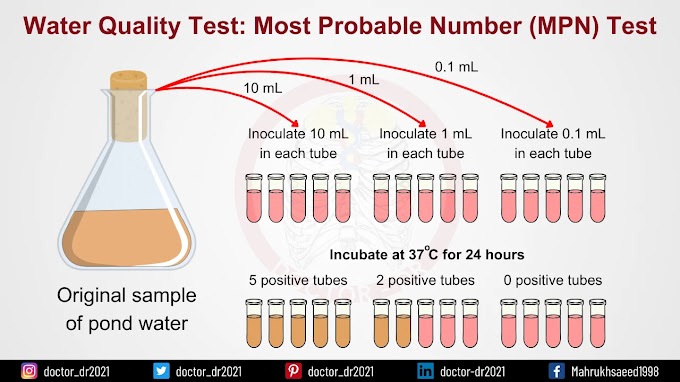Both light microscopes and electron microscopes create bigger, more detailed pictures of objects that are not visible to the naked eye using radiation (light or electron beams).
Light Microscope vs Electron Microscope (Table Form)
However, each of these microscopes has unique qualities and is useful for various tasks.
|
S.N. |
Character |
Light
Microscope |
Electron Microscope |
|
1. |
Alternatively known as |
Optical microscope |
Beam microscope |
|
2. |
Invented by |
Zacharius Jansen, a Dutch manufacturer of eyeglasses,
and his father Hans are said to have developed the compound microscope early
in the 16th century. |
German engineer Max Knoll and physicist Ernst Ruska
first met in 1931. |
|
3. |
Illuminating source |
uses light to illuminate the things in vision at a
wavelength of around 400 to 700 nm. |
uses an electron beam to enlarge things for a
detailed view at a wavelength of around 1 nm. |
|
4. |
Principle |
Light waves are absorbed to create the picture. |
The picture is created by the transmission or
scattering of electrons. |
|
5. |
Structure |
Light microscopes are smaller and lighter. |
Heavier and larger in size. |
|
6. |
Lenses used |
Lenses are made of glass. |
Lenses are made of electromagnets. |
|
7. |
Vacuum |
Not used under a vacuum |
Operates under a high vacuum |
|
8. |
Specimen type |
Fixed or unfixed, stained or unstained, living or
non-living. |
Fixed, stained, and non-living. |
|
9. |
Specimen observed |
Both live and dead specimens can be observed. |
Only dead specimens are possible to be observed. |
|
10. |
Specimen preparation |
Less tedious and simple. |
It often entails tougher procedures, such as the use
of caustic chemicals. To prepare specimens and analyse EM pictures, more
competence is needed (due to artifacts). |
|
11. |
Preparation time |
Specimen preparation takes usually a few minutes to
hours. |
Specimen preparation takes usually takes a few days. |
|
12. |
Thickness of specimen |
5 micrometer or thicker |
Ultra-thin, 0.1 micrometers or below |
|
13. |
Dehydration of Specimen |
Specimens need not be dehydrated before viewing. |
Only dehydrated specimens are used. |
|
14. |
Coating of specimen |
Stained by colored dyes for proper visualization. |
Coated with heavy metals to reflect electrons. |
|
15. |
Mounting of specimen |
Mounted on the glass slide. |
installed on the metal grid (mostly copper). |
|
16. |
Focusing |
Done by adjusting the lens position mechanically. |
done by altering the electric current's strength as
it passes through the electromagnetic lenses. |
|
17. |
Magnification power |
Low magnification of up to 1,500x. |
High magnification of up to 1,000,000x. |
|
18. |
Resolving power |
Low resolving power, usually below 0.30µm. |
The light microscope's resolving power is around 250
times lower than the high resolution of up to 0.001 m. |
|
19. |
Viewing of the image formed |
Images from a light microscope may be seen right
away. Through the eyepiece, images are seen by the eyes. |
Photographic plates or fluorescent screens made of
zinc sulphate are used to see the images. |
|
20. |
Nature of Image formed |
Poor surface view |
Good surface view and internal details |
|
21. |
Image Color |
Colored images. |
Electron microscopes produce grayscale (sometimes
called “black and white”) images (except “false-color” electron micrographs). |
|
22. |
Image dimension |
Image plane “flat” (2D). |
a transmission electron microscope (TEM) only in two
dimensions; SEM photos provide depth information that seems to be
three-dimensional. |
|
23. |
Living processes |
It is possible to visualise biological processes like
cell division and tiny pond life. |
Living processes cannot be viewed. |
|
24. |
Room settings |
No special settings are required. |
It has to be utilised in a space with regulated
humidity, pressure, and temperature. |
|
25. |
Simplicity in use |
Simple to use |
Users require technical skills |
|
26. |
Electric Current |
No need for high voltage electricity. |
A high voltage electric current is required (50,000 V
or above). |
|
27. |
Filaments |
No filaments are used. |
Tungsten filaments are used to generate electrons. |
|
28. |
Cooling System |
Absent |
There is a cooling system in place to reduce the heat
produced by high voltage electric current. |
|
29. |
Radiation leakage |
No radiation risk. |
Risk of radiation leakage. |
|
30. |
Complexity |
Less complex |
Complex |
|
31. |
Expense |
Cheap to buy and has low maintenance costs. |
Very expensive to buy as well as to maintain. |
|
32. |
Suitability / Practicality |
Suitable for most basic functions, and is very common
in schools and other learning institutions. |
Limited to specialized use such as research. |
|
33. |
Advantages |
Easy to use |
High resolution |
|
34. |
Disadvantages |
Low resolution due to shorter wavelength of light
(0.2nm) |
Expensive |
|
35. |
Types/ Variants |
Dark-field microscope |
Transmission electron microscope (TEM) |
|
36. |
Application |
It is used for the study of detailed gross internal
structure. |
It is used in the study of the external surface, the
ultrastructure of cells, and very small organisms. |







